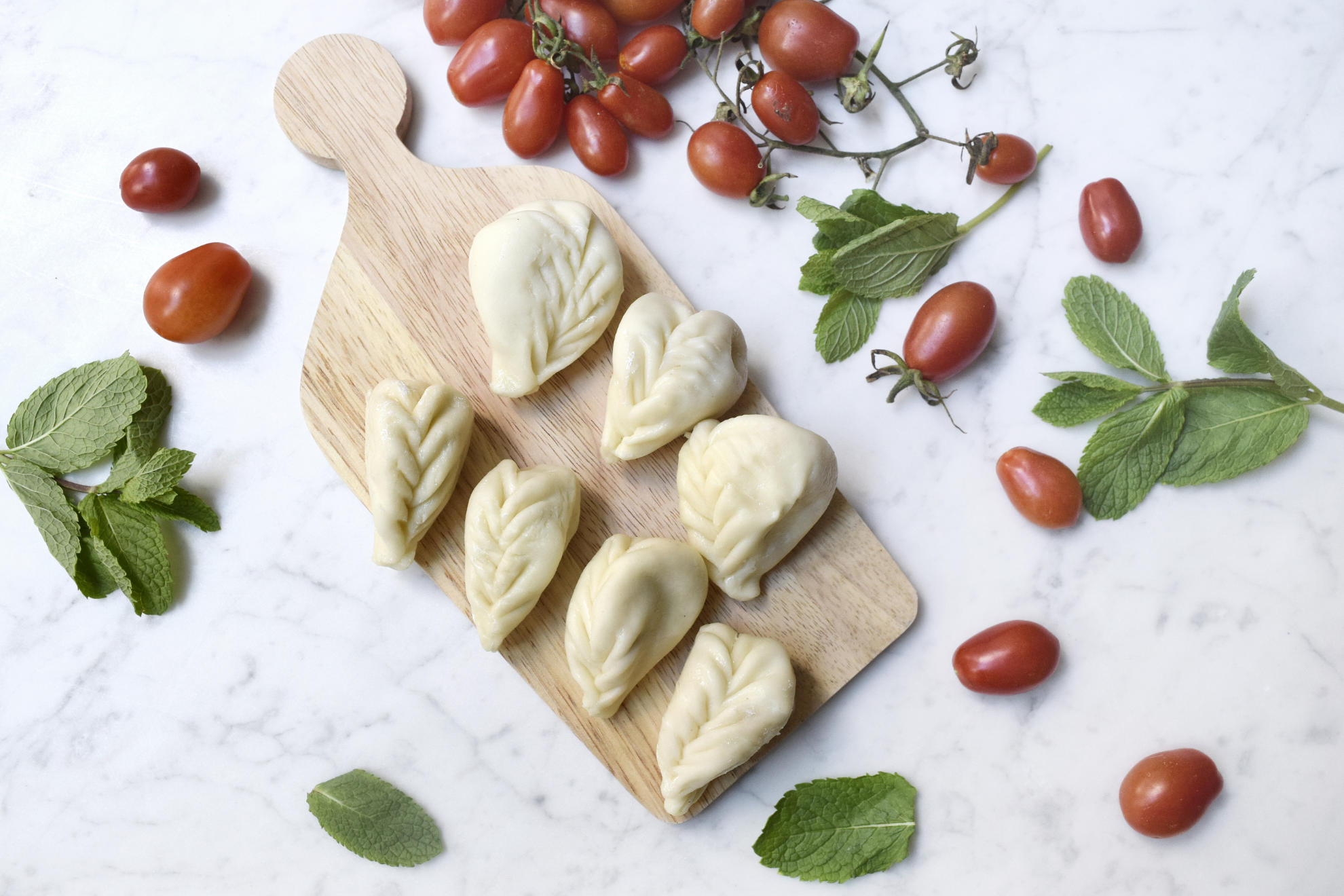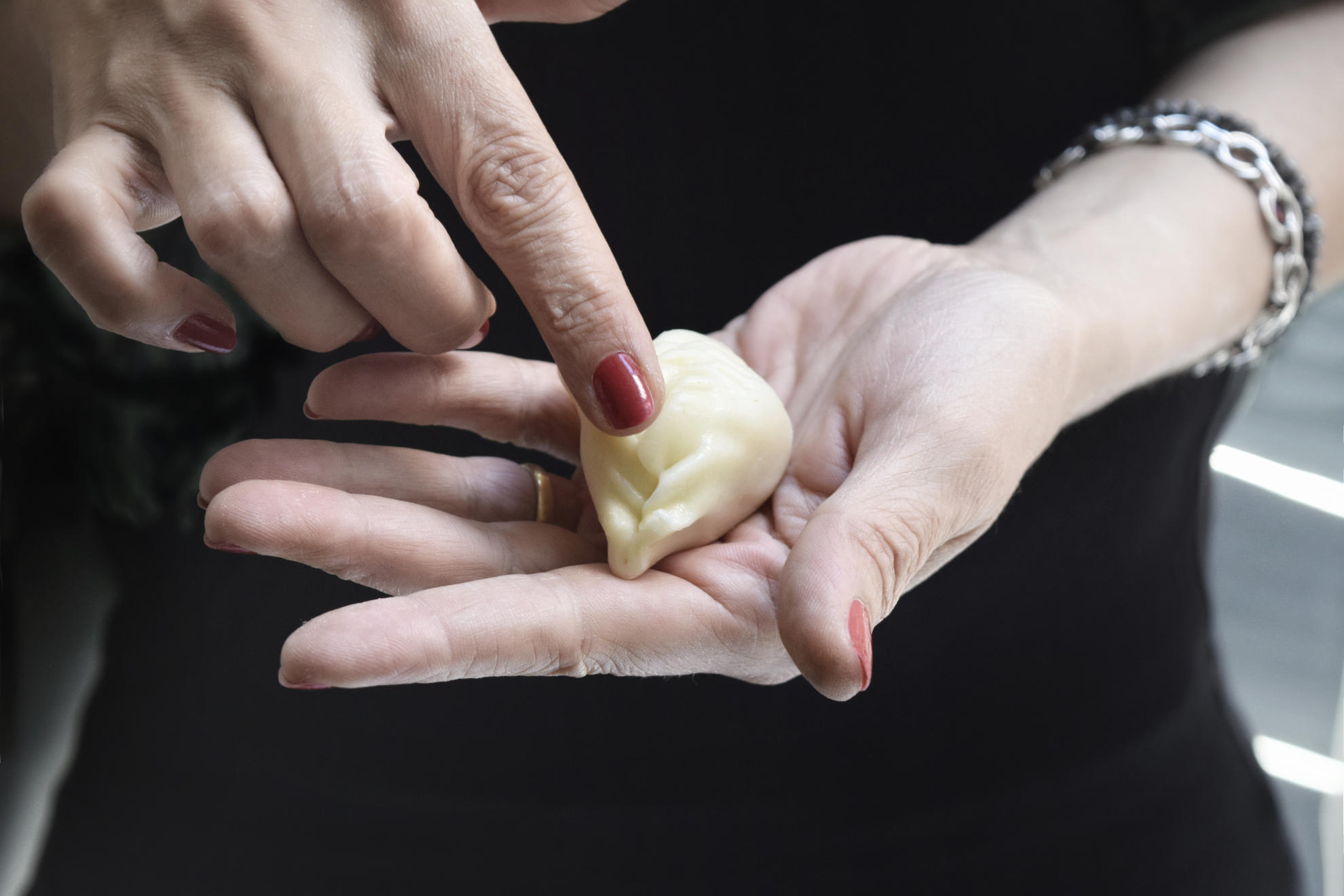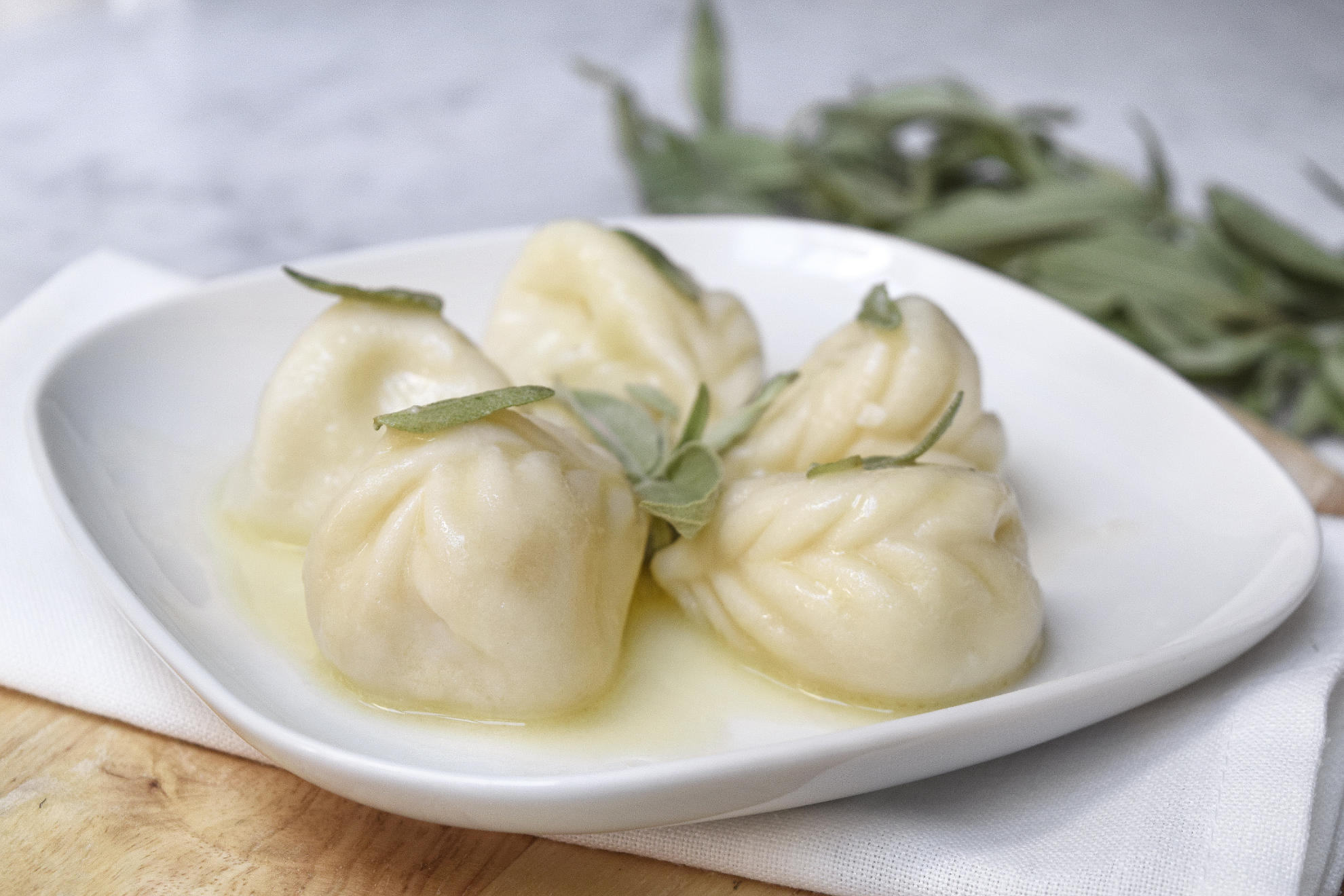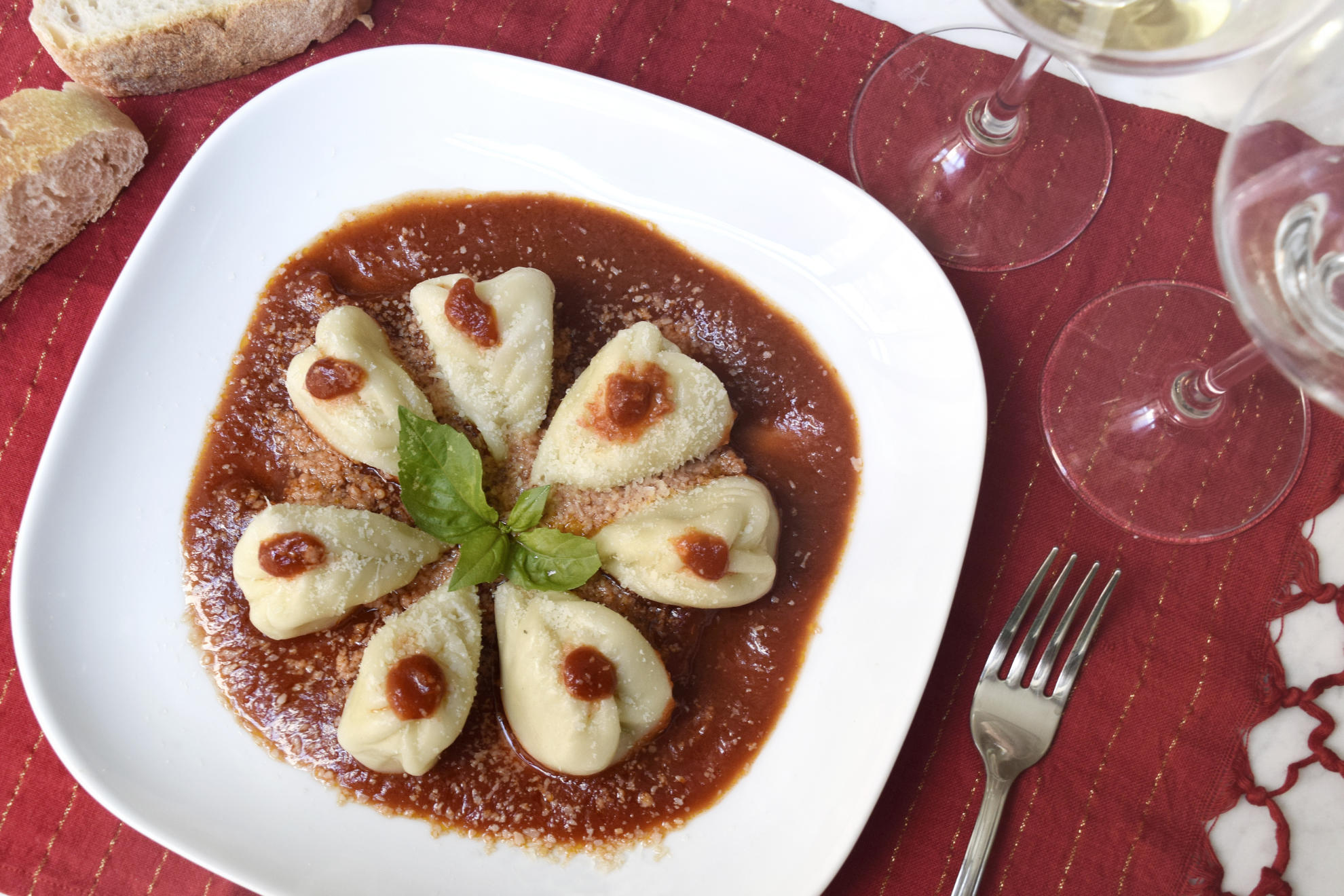The differences between the Sardinian cities create a variety of customs, colors and flavors which is the true wealth of the island, a land of many places and always different. This peculiarity is also evident in one of its most representative dishes.
Ph. Carolina Fragapane

Chubby like panzarotti and softer than ravioli, culurgiones describe the habits of Sardinian communities as much as a nuraghe can tell the story of the four Moors. Their birth dates back to the Middle Ages, but only in the 19th century the dish was identified as we know it today, when the cultivation of potatoes arrived in Ogliastra. From the east, the culurgiones gradually spread throughout Sardinia, changing ingredients and condiments according to the typical products of each province, according to the culinary customs of a village or based on family needs.
The dough, made with semolina flour, is rolled out to create a thin phyllo dough. With a glass you can make many circles of 4-10 cm wide on which a filling of potatoes, cheese and mint is put. Usually the cheeses used are viscidu, preserved in salt solution, and casu axedu, produced with sheep milk with a fresh and creamy solidity. Their blend gives the palate an intense flavor, tempered by the sweet taste of potatoes. A bite is enough to give an enticing pleasure...
Ph. Carolina Fragapane

To prevent the contents from exploding out of the agnolotto, a spike-shaped closure, the so-called sa spighitta, is embellished with pinches on the strips of the pasta disk. This explains what this arcane symbol that embellishes this type of pasta is: according to tradition, culurgiones are an amulet to propitiate the new wheat harvest. It is a quick gesture to be done with both hands from which the name of the dish would also derive: culina (kitchen) and urgeo (I hurry). After that you have to let them dry in sieves and cook them the next day.
Culurgiones with butter and sage | Ph. Carolina Fragapane

According to the classic recipe, culurgiones are cooked with a tomato sauce with grated pecorino cheese. They can also be prepared with butter and sage or fried or baked. But even in Ogliastra the opinions are conflicting: in Gairo, potatoes, garlic and mint are used in the filling. The lesser calamint takes the place of mint in Ulassai and Jerzu. In Barbagia the filling is made of only fresh pecorino, while the dressing is based on tomato sauce and crumbled sausage. In areas close the sea, such as Tortolì or Loztorai, potatoes and cheese are secondary ingredients compared to the onion which gives this dish a sweet taste.
To the south, in Campidano, they are prepared with fresh sheep ricotta, egg and saffron and someone also adds chard or spinach. The sweet version, however, is cooked with fresh ricotta, almonds and candied fruit. Not to mention the evolutions of modern cuisine, which often dare to the point of retracting its essence.
Culurgiones with tomato sauce | Ph. Carolina Fragapane

Today we can find these goodies at any time of the year, but the best known variants appear only in some seasons. In August and at Christmas, for example, we put on the table the culurgiones de casu, typical of Ogliastra, stuffed exclusively with cheese. At Carnival, those de ollu 'and porcu, that is made with lard, are in vogue. Finally, on the day of the commemoration of the dead, as happens especially in Sadali, the culurgiones de olluseu are prepared, made with sheep's fat.
An error in the preparation can always be forgiven, despite the existence of a specific rule. The only precaution is to serve them in the plate always in odd numbers, arranging them in such a way as to form the grains of a spike of wheat or the petals of a flower. It is only a concern, an ageless practice that for a Sardinian has more value than any written rule.

